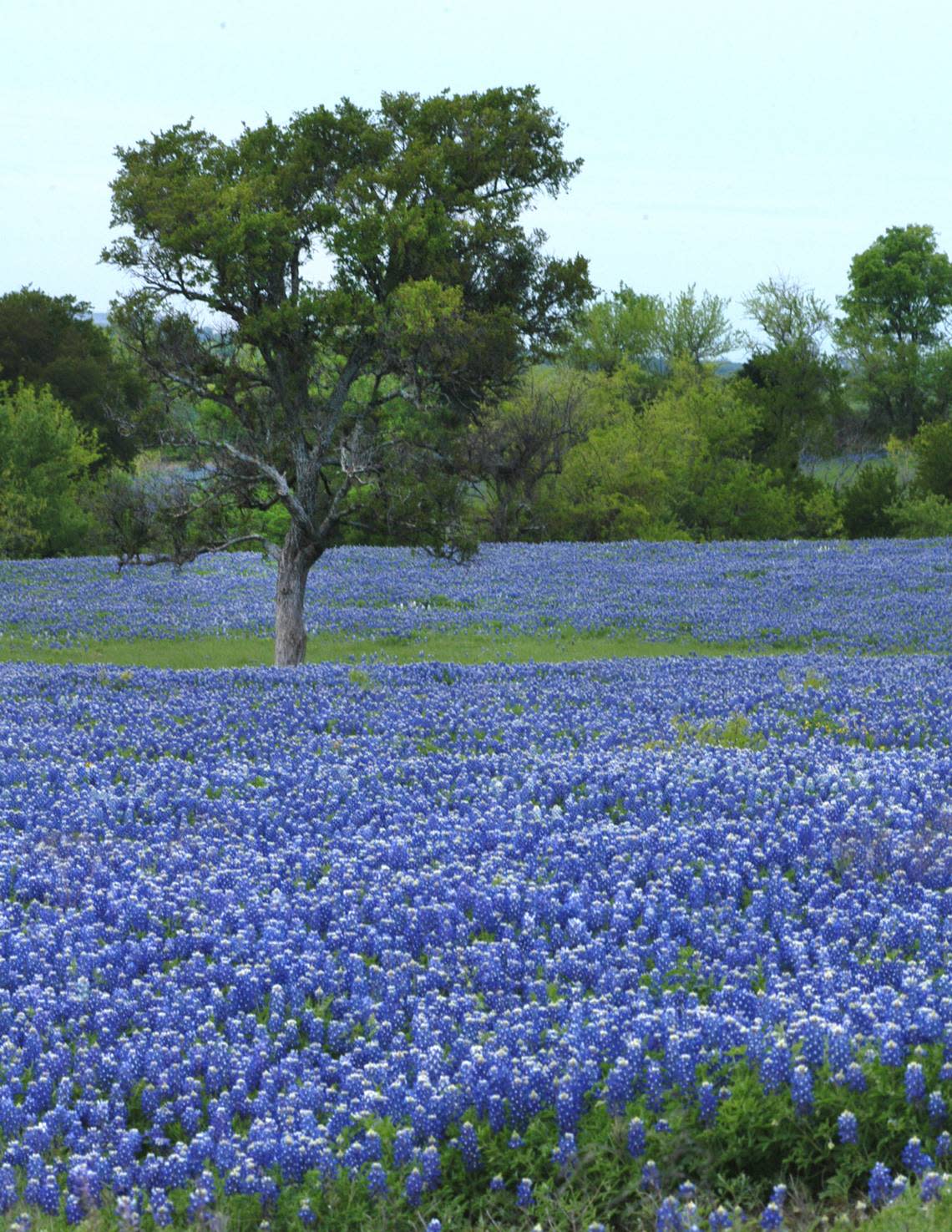Want to plant a native Texas plant? Some are more friendly than others

The past 30 years have seen a surge of interest in native Texas plants. They would seem to be a great choice for landscaping, but some are more user-friendly than others. Let me give some details.
Shade trees
I’ll start with large shade trees. They represent the biggest investment in time, space, money, and effort. Native trees have proven their merits locally.
▪ Shumard red oaks. These are the most abundant oak species in Tarrant and surrounding counties. They’re large, rounded trees at maturity, growing to 50 feet tall and wide. Personally, this is one of my favorite trees.
▪ Live oaks. From the Gulf Coast, through the Hill Country, even as far north as Parker and Palo Pinto counties you’ll see live oaks gracing Texas hillsides. Note to HOAs and cities: These are low, evergreen, spreading trees to 40 feet tall and 60 to 75 feet wide! They should be reserved for large lots and rural acreages. They have no business being planted in smaller neighborhoods, parkways and medians.
▪ Bur oaks. No tree has a more rugged appearance. Their leaves are as large as dinner plates and their bark is rough and fissured. Native to river bottoms, they grow into rounded trees 60 feet tall and wide.
▪ Chinquapin oaks. Recently becoming popular, they’re native locally. Their leaves are dark green and toothed. Their bark adds nice drama, and their growth form is attractively oval. Like all oaks, they live in excess of 100 years. Mature height is 60 to 70 feet. Mature width is 40 to 50 feet.
▪ Cedar elms. Common on open prairie lands across Tarrant and Wise counties and beyond. Oval form, to 50 feet tall and 40 feet wide. Their leaves are small, to 1 inch and fuzzy like a cat’s tongue on their top surfaces. The trees are graceful with their twiggy growth habits.
▪ Pecans. It’s fitting that our State Tree would also be a good shade tree. They are very large at maturity, to 75 to 80 feet tall and wide, so give them ample space and deep soil. While you’re at it, choose an improved variety like Caddo, Desirable or Pawnee.
▪ Eastern redcedar juniper. If you’re looking for an evergreen for use as a screen, this is the one. Forget the disease-ridden Leyland cypress, Arizona cypress, and Italian cypress. Plant on 18- to 22-foot centers and keep them moist their first couple of summers. After that they’ll take over on their own.
▪ Southern magnolias. It’s easy to forget that these are native to East Texas. They’ve been staples to Metroplex landscapes almost forever. The species grows to 50 feet tall and 40 feet wide if it has deep soil and ample moisture. Smaller named types are also available.
Shrubs
While North Texas has a good supply of outstanding shade trees, we’re short on dependable shrubs. Here are some you’ll want to consider.
▪ Yaupon holly. Hands down, this is our state’s finest native shrub. The species grows to 15 or 20 feet tall and wide, but compact and weeping forms are sold. It’s evergreen and spineless, with small, bright red berries all winter. It’s great in sun or shade. Buy a named variety to ensure that you’ll get a female plant capable of bearing fruit.
▪ Possumhaw holly. Looking somewhat like yaupon, this deciduous holly is native to the prairies and fencerows of our area. Buy a female (fruiting) selection called Warren’s Red, however, because it has larger, brighter red berries and is less likely to produce suckering sprouts at its base. It grows to 15 feet tall and 10 feet wide.
▪ Agarita. This is an uncommon barberry relative from the arid hillsides of Southwest Texas. It has blue-green leaves on plants that grow somewhat like nandinas (their cousins). Its flowers are brilliant golden yellow in late winter, and its berries are bright red in the spring. It’s slow-growing and prickly, also hard to find.
▪ American beautyberry. This handsome native acts somewhat like a shrub, but it can also be used as a tall backdrop in the perennial garden. It grows to 4 feet tall and wide, and it does best with morning sun and shade in the afternoon. It prefers moist, highly organic soil. Its fruit is unlike any other. It’s borne in large gathers of iridescent maroon berries clustered every few inches along the stems.
As a favor, I thought I might mention a few natives I won’t plant myself. They’re from my personal “never again, Neil” list — plants that have struggled and failed in my own landscape locally.
▪ Wax myrtles. Intolerant of our soils and dry climate. They’re native to much wetter conditions of Southeast Texas.
▪ Texas mountain laurels. Not reliably winter-hardy. In living in Fort Worth/Dallas for 54 years, I’ve seen them freeze and die several times.
▪ Texas sage (ceniza). Native to Southwest Texas, they’ve suffered the same frequent dieback and loss to cold winters here. Use only in small numbers as accents.
▪ Bald cypress. Great trees where they’re adapted, these struggle with our alkaline soils and caliche bedrock. Iron deficiency gets them after a few years. Plus, those dreadful “knees” that pop up everywhere. They’re death to lawnmowers and bare feet.
▪ Loblolly pines. (Same thing goes for water oaks.) These plants need acidic soils or they’ll run into iron deficiency after 5 or 10 years. You can amend the soils at the time of planting, but not over a large enough area to do any good, plus the help you provide will play out over the years. Nope. “Never again, Neil.”

